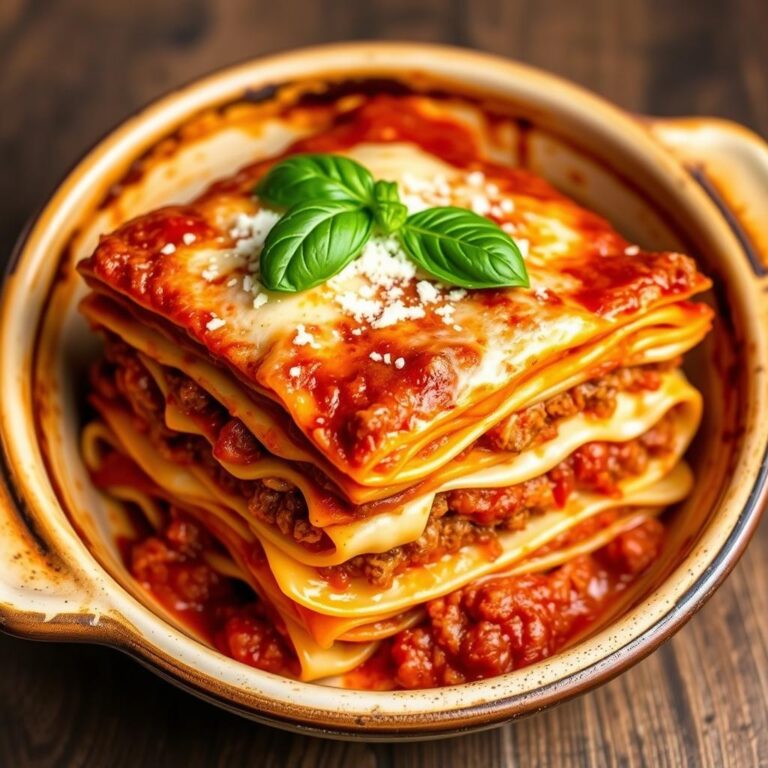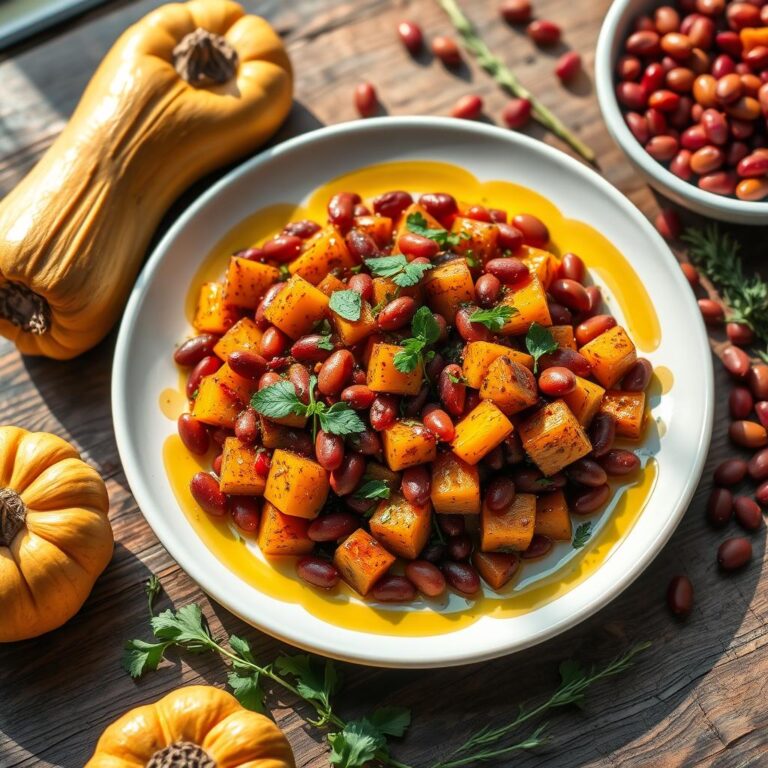Gluten Free Tortellini: How to Make It from Scratch
Have you ever wondered if you could create restaurant-quality pasta in your own kitchen? Imagine crafting delicate, flavorful Gluten Free Tortellini from scratch, using simple ingredients and techniques that anyone can master. It’s easier than you think!
Making homemade pasta is a rewarding experience that brings a fresh, authentic touch to your meals. With the right guidance, even beginners can achieve impressive results. This article will walk you through a tested recipe and chef-approved methods to create gluten free tortellini that’s both delicious and satisfying.
Whether you’re new to pasta-making or looking to refine your skills, this guide promises to make the process enjoyable and straightforward. Get ready to impress your family and friends with a dish that’s made with love and care. Let’s dive into the art of crafting perfect tortellini!
Key Takeaways
- Learn how to make gluten-free tortellini from scratch with simple ingredients.
- Discover chef-approved techniques for perfect pasta every time.
- Even beginners can achieve great results with proper guidance.
- Enjoy a fresh, homemade alternative to store-bought pasta.
- Detailed instructions and tips are provided for every step of the process.
Introduction to Gluten Free Tortellini
Ready to elevate your cooking skills with a homemade pasta recipe? This guide will walk you through every step of creating delicious, gluten free tortellini from scratch. Whether you’re a beginner or a seasoned cook, you’ll find this process straightforward and rewarding.
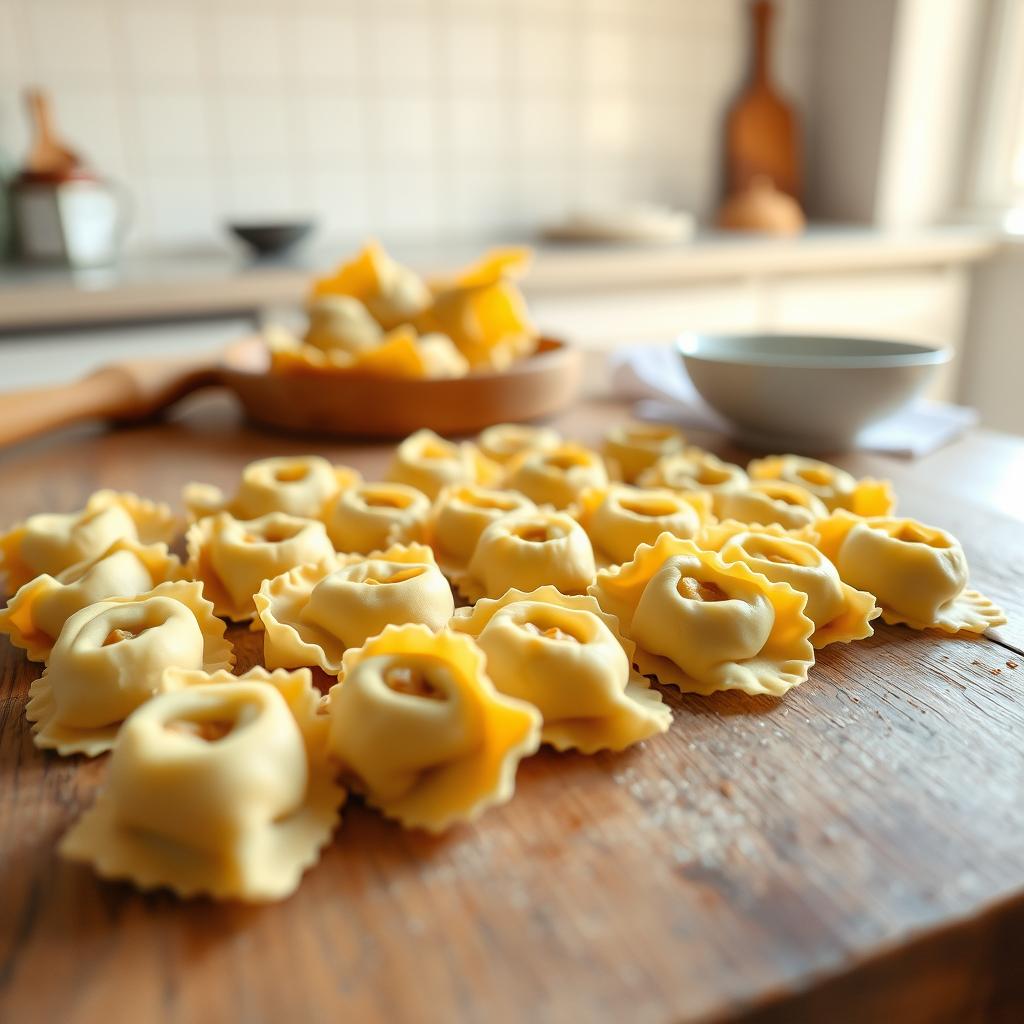
In this article, you’ll learn the techniques and tips that make this recipe unique. From crafting the perfect dough to preparing flavorful fillings, each step is designed to be easy and enjoyable. You’ll also discover time-saving methods to streamline the process.
What You Will Learn
- How to make a smooth, pliable dough using simple ingredients.
- Techniques for creating delicious fillings, like classic ricotta and basil.
- Practical tips for handling and shaping the pasta with ease.
- Simplified instructions validated by popular gluten-free recipes.
- Time-saving methods to make the process efficient and stress-free.
By the end of this guide, you’ll have the confidence to create restaurant-quality tortellini in your own kitchen. Let’s get started!
Essential Ingredients for a Successful Pasta
The foundation of any great pasta dish lies in its ingredients. Using high-quality components ensures your dish is flavorful and has the perfect texture. Let’s explore the key elements you’ll need to create a standout recipe.
Choosing the Right Flour Blend
A strong flour blend is crucial for making pliable dough. Opt for a mix that includes maize, tapioca, and rice flour. These provide the right balance of texture and elasticity. Adding xanthan gum helps bind the dough, making it easier to work with.
For best results, measure your flour precisely. Use a kitchen scale or measuring cups to ensure consistency. A ratio of 1.43:1 (flour to eggs) works well for most recipes.
Selecting Fresh and Flavorful Fillings
Fresh ingredients elevate your filling to the next level. Start with aromatic components like onions and garlic. Sauté them in high-quality olive oil for a rich, savory base.
For a classic filling, combine ricotta cheese with parmesan, eggs, and a pinch of salt. Add dried basil for an herby touch. This mixture creates a luxurious, creamy center for your pasta.
“The quality of your ingredients directly impacts the final dish. Always choose fresh, high-quality options for the best results.”
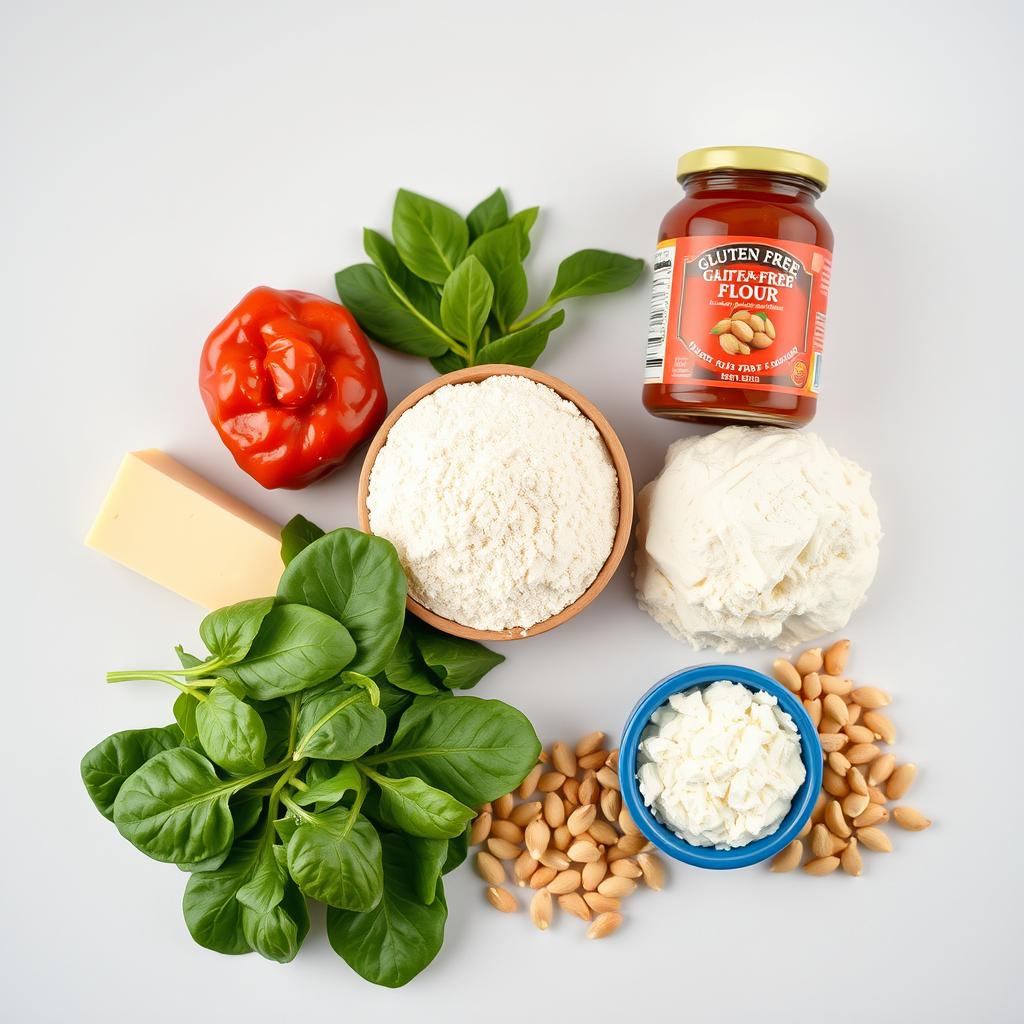
| Ingredient | Quantity | Purpose |
|---|---|---|
| Gluten-Free Flour Blend | 1 ¼ cups | Base for dough |
| Olive Oil | 1 tablespoon | Hydration and flavor |
| Ricotta Cheese | 8 oz | Filling base |
| Onion | 1 medium | Aromatic flavor |
| Garlic | 2 cloves | Aromatic flavor |
By focusing on quality and precision, you’ll create a dish that’s both delicious and satisfying. Let’s move on to crafting the perfect dough!
Creating the Perfect Gluten Free Tortellini Dough
Mastering the art of pasta dough is easier than you think. With a few simple steps, you can create a smooth, pliable dough that’s perfect for shaping into delicate pasta. Let’s dive into the process.
Mixing and Kneading Techniques
Start by combining 1 ¼ cups of gluten-free flour blend, 1 teaspoon of xanthan gum, and ⅓ cup of tapioca starch in a large bowl. Mix these dry ingredients thoroughly to ensure even distribution.
Next, add 1 tablespoon of olive oil and ½ cup of warm water. Use your hands or a stand mixer to knead the dough for about 3-4 minutes. The goal is to achieve a smooth, elastic texture. If the dough feels stiff, add water drop by drop until it becomes pliable.
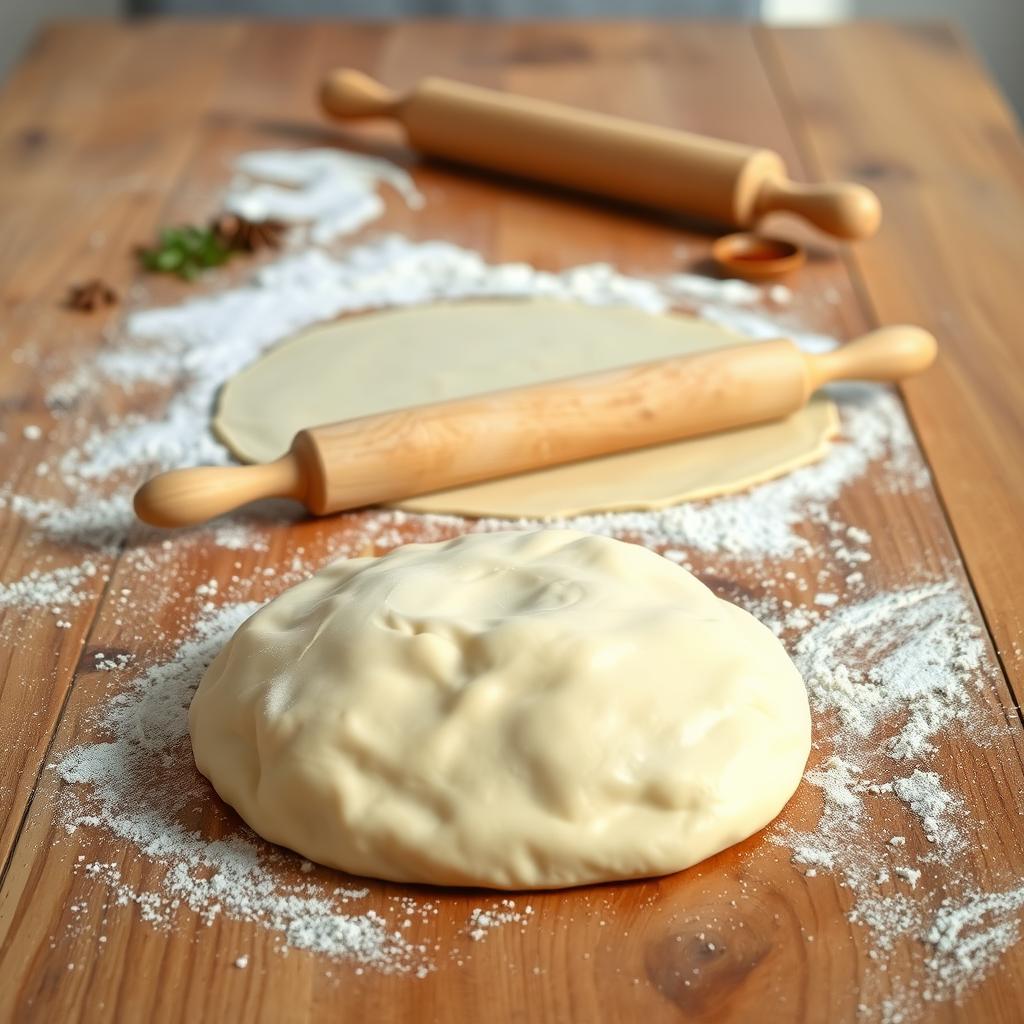
Once the dough is ready, wrap it tightly in plastic wrap. Let it rest for 30 minutes at room temperature. This resting time allows the dough to hydrate fully, making it easier to roll out later.
If you have excess dough trimmings, don’t discard them. Wrap them in plastic and freeze for up to 3 months. This way, you can save time on your next pasta-making session.
“Proper mixing and kneading are the foundation of successful pasta dough. Take your time to get it right.”
| Ingredient | Quantity | Purpose |
|---|---|---|
| Gluten-Free Flour Blend | 1 ¼ cups | Base for dough |
| Olive Oil | 1 tablespoon | Hydration and flavor |
| Warm Water | ½ cup | Binding agent |
| Xanthan Gum | 1 teaspoon | Elasticity |
| Tapioca Starch | ⅓ cup | Texture |
By following these instructions, you’ll create a dough that’s easy to work with and perfect for crafting delicious pasta. Now that your dough is ready, let’s move on to the next step!
Crafting Delicious Tortellini Fillings
The secret to unforgettable pasta lies in its filling. A well-crafted centerpiece can elevate your dish from ordinary to extraordinary. Let’s explore how to create mouthwatering fillings that complement your pasta perfectly.
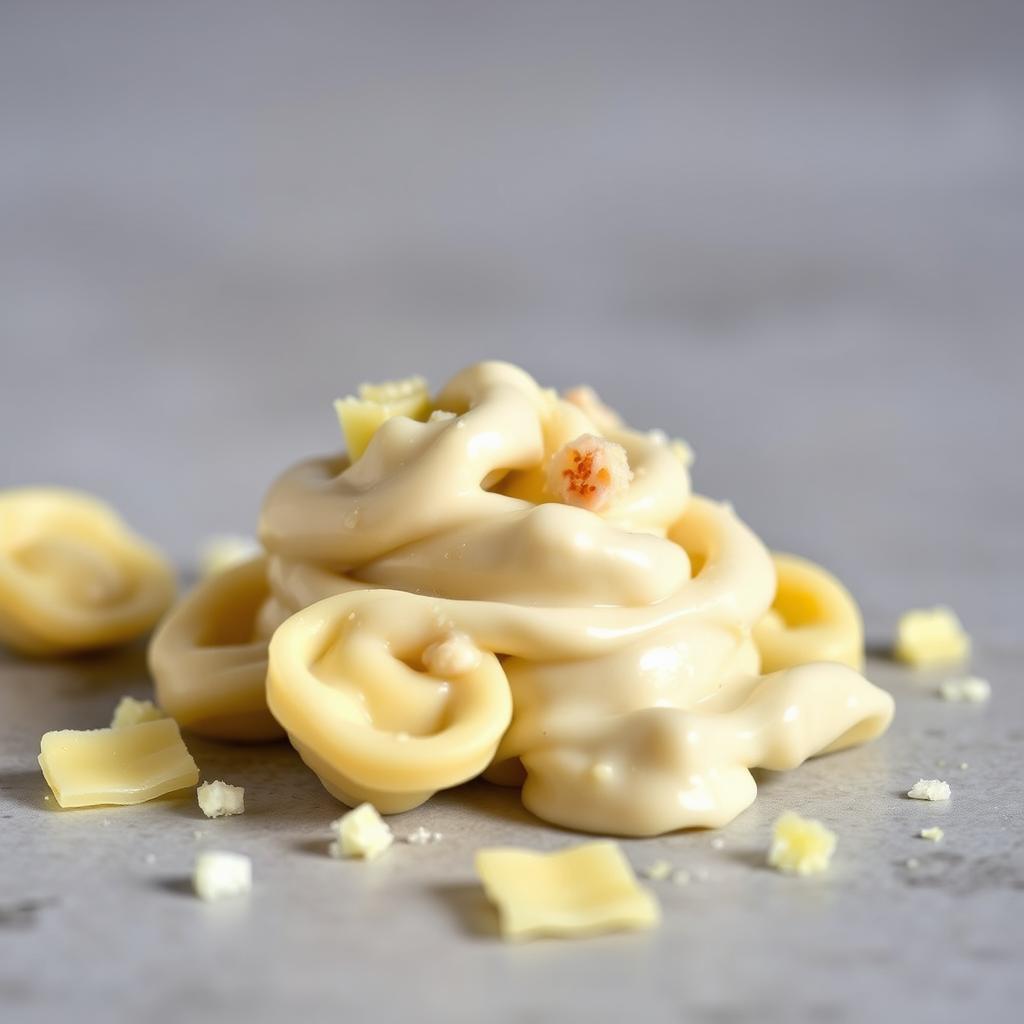
Classic Ricotta Basil Filling
For a timeless flavor, start with a classic ricotta basil filling. Combine 8 ounces of creamy ricotta cheese with 1 tablespoon of finely chopped fresh basil. Add a pinch of salt and a dash of black pepper for seasoning.
Mix the ingredients until smooth and spreadable. This simple yet flavorful blend pairs beautifully with the delicate pasta dough. For extra richness, consider adding a sprinkle of grated parmesan.
Alternative Filling Options
If you’re feeling adventurous, try alternative fillings. Mashed potatoes with herbs or grilled vegetables like zucchini and eggplant are excellent choices. These options cater to different dietary needs and add a unique twist to your dish.
For a protein-packed option, blend cooked spinach with ricotta and garlic. This combination is both nutritious and delicious. Whichever filling you choose, ensure it’s well-seasoned to enhance the overall flavor.
“A great filling is the heart of any pasta dish. Experiment with flavors to find your perfect match.”
By focusing on quality ingredients and precise measurements, you’ll create fillings that are both flavorful and consistent. Now that your fillings are ready, let’s move on to shaping your pasta!
Mastering Tortellini Shaping and Sealing
Shaping pasta by hand is an art that transforms simple ingredients into something extraordinary. With the right techniques, you can create uniform, beautifully sealed pasta that cooks evenly and looks professional. Let’s explore the steps to perfect this process.
Start by rolling your dough to an even thickness. Aim for less than 1 millimeter for the best results. Use a rolling pin or pasta machine to achieve a smooth, consistent texture. This ensures your pasta cooks evenly and holds its shape.
Next, cut the dough into perfect rounds. A medium-sized cutter works well for this step. Keep the edges thin to make folding and sealing easier. Consistency is key here, so take your time to get it right.
To shape the pasta, place a small amount of filling in the center of each round. Moisten the edges with water to help them stick. Fold the dough into a half-moon shape, pressing gently to seal the edges.
Finally, pinch the dough firmly to ensure the filling stays intact. Proper sealing prevents leaks during cooking and keeps your pasta looking neat. Take care not to overfill, as this can make sealing more challenging.
“The secret to perfect pasta lies in the details. Take your time to shape and seal each piece with care.”
Handling fresh pasta requires a gentle touch. Avoid tearing the dough by working on a lightly floured surface. If the dough feels sticky, dust it with a bit more flour. Resting the shaped pasta for about an hour before cooking can also improve its texture.
By following these steps, you’ll create pasta that’s not only delicious but also visually stunning. Now that your pasta is shaped and sealed, it’s time to move on to the cooking process!
Perfect Cooking Methods for Tortellini
Cooking pasta to perfection requires the right techniques and tools. Whether you prefer boiling for tender results, baking for a golden finish, or one-skillet recipes for convenience, each method brings unique benefits to your dish. Let’s explore these options to help you achieve the best texture and flavor.
Boiling for Tender Pasta
Boiling is the most traditional way to cook pasta. Bring a large pot of salted water to a rolling boil. Add your pasta and stir occasionally to prevent sticking. Cook until al dente, following the package instructions. This method ensures even cooking and a tender bite.
Baking for a Golden Finish
For a crispy, golden crust, try baking your pasta. After boiling, transfer it to a baking dish. Add your favorite sauce and toppings, like melted cheese or breadcrumbs. Bake at 375°F for 15-20 minutes until bubbly and golden. This method adds a delightful crunch to your dish.
One-Skillet Recipes for Convenience
One-skillet meals are perfect for busy weeknights. Start by browning ground beef or chicken in a large skillet with a tablespoon of olive oil and minced garlic. Add your pasta, sauce, and a splash of water. Simmer until the pasta is cooked through. Finish with a sprinkle of cheese for extra flavor.
“Using the right cooking method can transform your pasta into a restaurant-quality dish. Experiment to find your favorite!”
To prevent sticking, use the correct amount of oil and stir frequently. Adding ingredients like veggy or extra protein can elevate the dish’s flavor. A well-equipped kitchen with a reliable pot and skillet is essential for achieving the perfect texture.
Gluten Free Tortellini: Creative Recipe Variations
Transform your pasta dish with creative sauces that bring new flavors to the table. A simple change in sauce can turn a classic recipe into something extraordinary. Whether you prefer creamy, tangy, or spicy, there’s a sauce to suit every taste.
Elevating Your Meal with Unique Sauces
Experiment with sauces that complement your dish perfectly. A vodka sauce adds a rich, creamy texture, while a spicier tomato mix brings a bold kick. For a lighter option, drizzle extra virgin olive oil and top with fresh basil ribbons and parmesan shavings.
Customize your meal with seasonal produce or your favorite ingredients. Add roasted vegetables for a hearty twist or incorporate fresh herbs for a burst of flavor. The possibilities are endless when you let your creativity guide you.
“The right sauce can transform a simple dish into a gourmet experience. Don’t be afraid to experiment with bold flavors.”
Here’s a quick guide to balancing flavors in your sauces:
- Use a mix of olive oil, basil, and a dash of lemon for a fresh, zesty finish.
- Add a pinch of salt and pepper to enhance the natural flavors of your ingredients.
- Incorporate a touch of sweetness, like honey or balsamic glaze, to balance acidity.
| Sauce Option | Flavor Profile | Pairing Tip |
|---|---|---|
| Vodka Sauce | Creamy, rich | Perfect with cheese tortellini |
| Spicy Tomato | Bold, tangy | Great for adding heat |
| Basil Olive Oil | Light, fresh | Ideal for summer dishes |
By experimenting with different sauces, you can create a dish that’s uniquely yours. Small tweaks in flavor can make a big difference, turning an ordinary meal into a memorable dining experience.
Tips, Tricks, and Ingredient Substitutions
Making pasta at home can be a breeze with the right tips and tricks. Whether you’re a beginner or a seasoned cook, these expert tips will help you avoid common pitfalls and save time in the kitchen. From troubleshooting dough issues to finding clever ingredient swaps, this guide has you covered.
Time-Saving Methods and Pro Tips
Preparing pasta ahead of time can make busy days easier. Shape and freeze your dough for up to 3 months. When ready to cook, boil for an extra 2-3 minutes. This method ensures fresh-tasting pasta without the hassle.
For filling leakage, ensure your edges are well-sealed. Use a bit of water to moisten the dough before folding. Avoid overfilling, as this can make sealing more challenging. A consistent thickness of less than 1 millimeter is key for even cooking.
“A little patience goes a long way in pasta-making. Take your time to shape and seal each piece with care.”
Ingredient Substitutions
If you’re out of ricotta cheese, try blending cottage cheese or tofu for a similar texture. For a plant-based twist, substitute ground beef with lentils or mushrooms. These swaps maintain flavor while catering to dietary preferences.
Here’s a quick guide to common substitutions:
- Replace cheese with nutritional yeast for a dairy-free option.
- Use mashed sweet potatoes instead of ricotta cheese for a creamy filling.
- Swap chicken with shredded jackfruit for a meatless alternative.
Storage and Reheating
Store raw pasta in an airtight container with wax paper between layers. For cooked pasta, reheat gently in a skillet with a splash of water or broth. This prevents drying and keeps the texture perfect.
Seasoning is crucial. Always taste and adjust salt levels before serving. A pinch of salt can elevate the flavor of your dish significantly.
By following these tips and tricks, you’ll master the art of pasta-making with ease. Experiment with different ingredients and methods to find what works best for you!
Conclusion
Crafting homemade pasta is a rewarding journey that brings joy to your kitchen. With this simple pasta recipe, you can create delicious meals that rival restaurant-quality dishes. From mixing the dough to shaping and cooking, each step is designed to be easy and enjoyable.
Even if you’re short on time, this recipe fits seamlessly into a busy schedule. Whether you boil, bake, or use a skillet, the results are always satisfying. Experiment with fillings and sauces to make the dish uniquely yours.
Don’t forget to share your creations with friends and family. A sprinkle of parmesan or a dash of garlic can elevate your meal to the next level. Enjoy the process and savor every bite of your homemade masterpiece!
FAQ
What’s the best flour blend for making pasta from scratch?
A mix of rice flour, tapioca starch, and xanthan gum works well. It creates a dough that’s easy to handle and has a great texture.
Can I use store-bought fillings for my homemade pasta?
Absolutely! Pre-made ricotta or spinach fillings are convenient and still deliver great flavor. Just ensure they’re fresh and high-quality.
How do I prevent the dough from tearing when shaping?
Roll the dough evenly and keep it slightly thicker than usual. A light dusting of flour blend helps prevent sticking and tearing.
What’s the best way to cook these pasta pieces?
Boiling is the most common method. Cook them in salted water for 3-4 minutes or until they float to the top. Baking or skillet recipes are also great options.
Can I freeze the pasta for later use?
Yes! Place them on a baking sheet, freeze until solid, then transfer to a bag. They’ll keep for up to 2 months. Cook directly from frozen, adding a minute or two to the cooking time.
What sauces pair well with this type of pasta?
A simple marinara, creamy Alfredo, or pesto sauce works beautifully. Experiment with your favorite flavors to elevate the dish.
How do I store leftover cooked pasta?
Keep them in an airtight container in the fridge for up to 3 days. Reheat gently in a skillet with a splash of olive oil or sauce.
Can I make the dough ahead of time?
Yes! Wrap the dough tightly in plastic wrap and refrigerate for up to 24 hours. Let it come to room temperature before rolling and shaping.
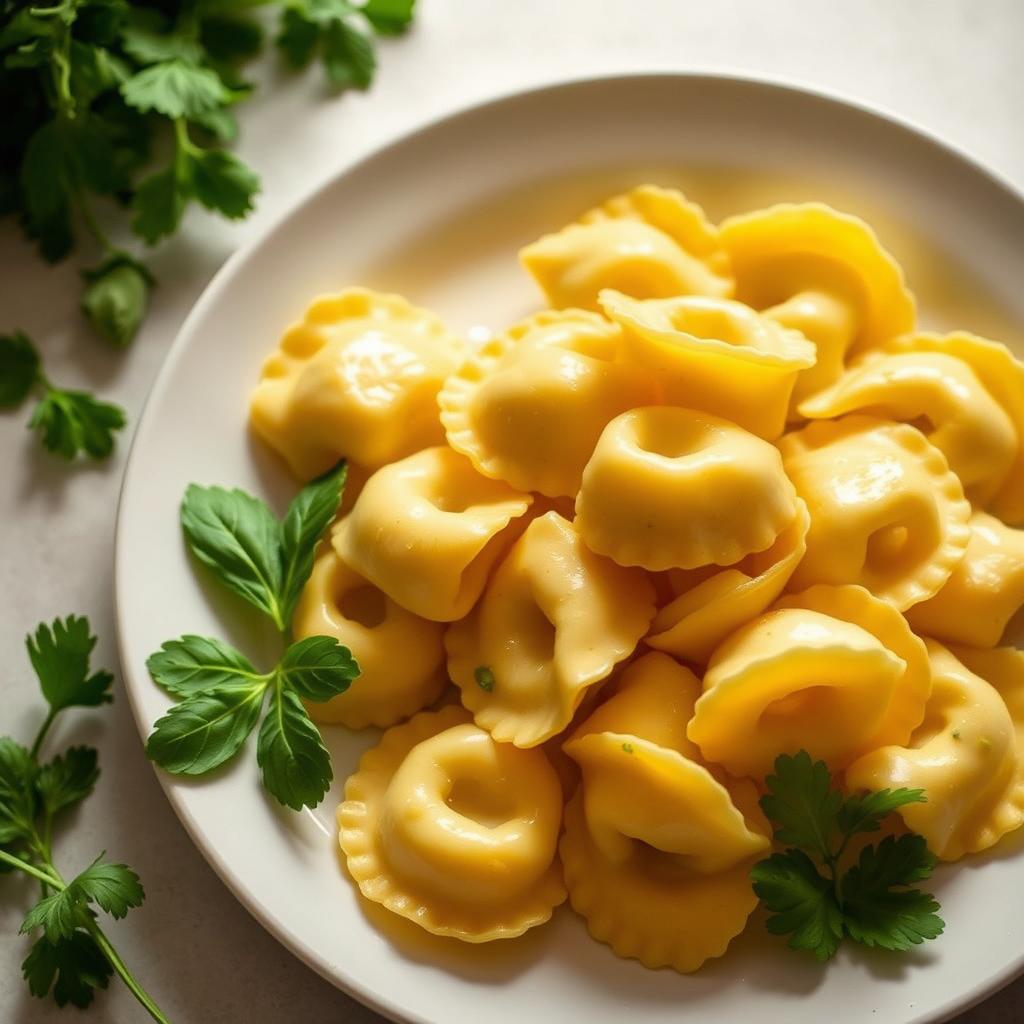
Gluten Free Tortellini: How to Make It from Scratch
Ingredients
Method
- Prepare the Dough: In a bowl, mix gluten-free flour and salt. Create a well in the center, add eggs and olive oil, then mix until a dough forms. Knead for 5 minutes, wrap in plastic, and let it rest for 30 minutes.
- Make the Filling: In a bowl, combine ricotta, Parmesan, salt, black pepper, garlic powder, and oregano. Mix well and set aside.
- Roll the Dough: Roll the dough into a thin sheet (about 2mm thick). Use a round cutter to cut circles.
- Fill the Tortellini: Place 1/2 teaspoon of filling in the center of each dough circle. Fold in half to form a half-moon, press edges to seal, then wrap around your finger and pinch ends together.
- Cook the Tortellini: Bring a pot of salted water to a boil. Drop in tortellini and cook for about 3-5 minutes, or until they float.
- Serve: Drain and serve with your favorite sauce, such as marinara or browned butter with sage.
Notes
- You can substitute ricotta with mashed tofu for a dairy-free option.
- Be sure to roll the dough thinly to prevent a tough texture.
- If the dough is too dry, add a little water, one teaspoon at a time.



